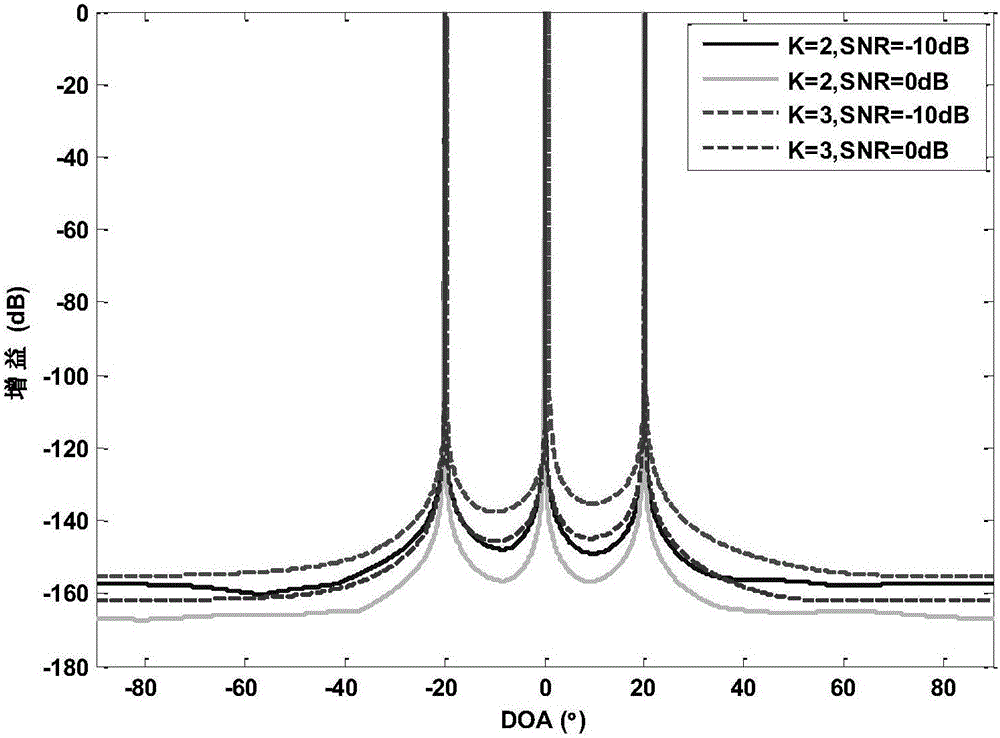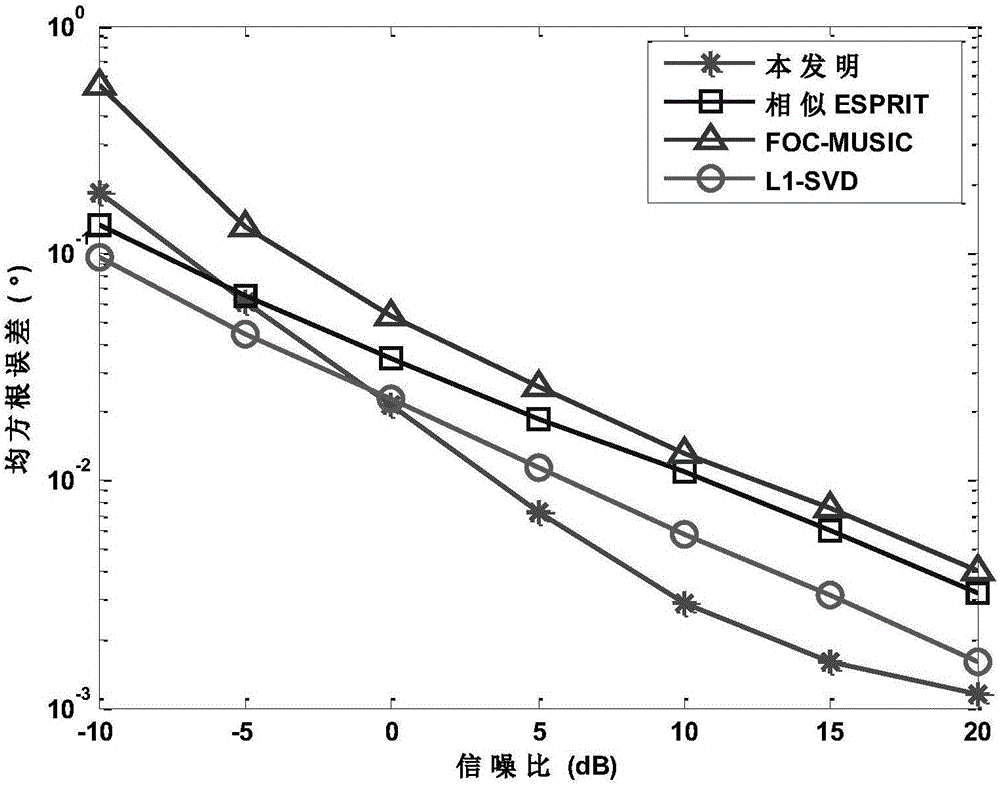Four-order cumulant sparse representation-based MIMO (multiple-input-multiple-output) radar direction of arrival estimation method under mutual coupling condition
A fourth-order cumulant and sparse representation technology, applied to radio wave measurement systems, instruments, etc., can solve problems such as estimation performance degradation
- Summary
- Abstract
- Description
- Claims
- Application Information
AI Technical Summary
Problems solved by technology
Method used
Image
Examples
Embodiment 1
[0140] Step 1: Establishing the receiving signal model of the monostatic MIMO radar under the condition of unknown mutual coupling error, and using linear transformation to eliminate the influence of unknown mutual coupling according to the structural characteristics of the mutual coupling matrix.
[0141] Consider a narrow-band monostatic MIMO radar system. The transmitting array and the receiving array are composed of M and N antennas respectively, and the arrays are uniform linear arrays with a half-wavelength spatial spacing. In a monostatic MIMO radar the transmit and receive arrays are closely co-located, so they can be seen as having the same angle (ie, direction of arrival (DOA)) to a far-field target. The transmitting array uses M antennas to transmit M different narrow-band orthogonal waves with the same bandwidth and center frequency, assuming that the number of targets is P, θ p Denotes the DOA of the p-th target. In the case of K=k+1 non-zero mutual coupling coef...
PUM
 Login to View More
Login to View More Abstract
Description
Claims
Application Information
 Login to View More
Login to View More - R&D
- Intellectual Property
- Life Sciences
- Materials
- Tech Scout
- Unparalleled Data Quality
- Higher Quality Content
- 60% Fewer Hallucinations
Browse by: Latest US Patents, China's latest patents, Technical Efficacy Thesaurus, Application Domain, Technology Topic, Popular Technical Reports.
© 2025 PatSnap. All rights reserved.Legal|Privacy policy|Modern Slavery Act Transparency Statement|Sitemap|About US| Contact US: help@patsnap.com



